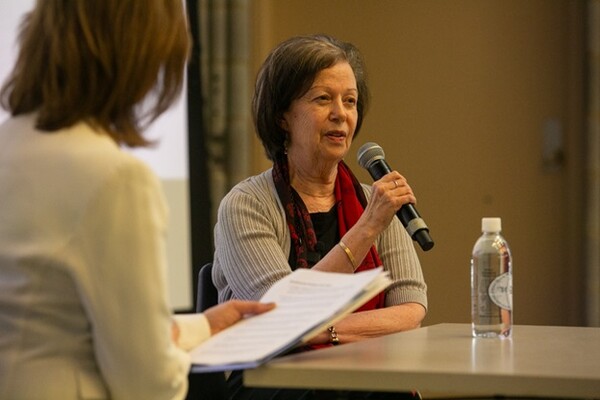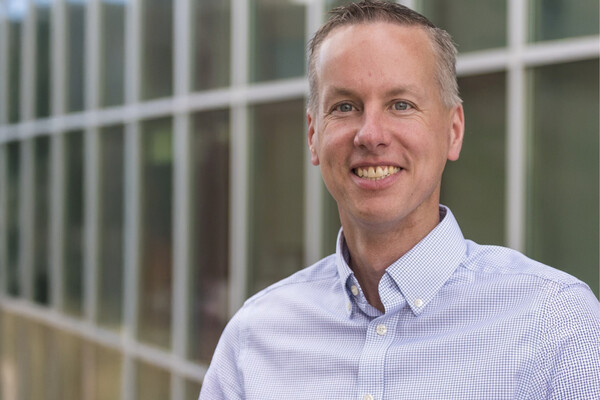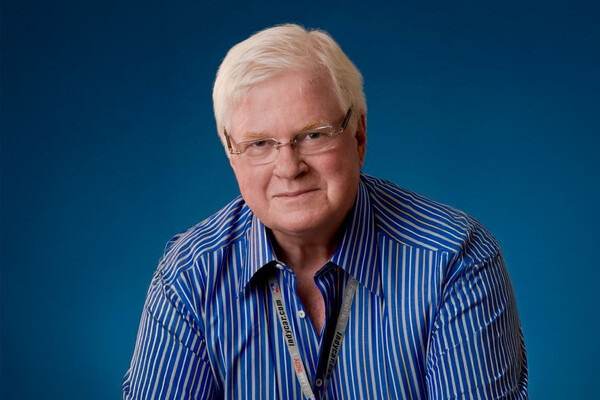Main Second Level Navigation
Breadcrumbs
- Home
- News & Events
- Recent News
- Restoring the Spirit: Judith Friedland, Dip’60 (POT), BA’67, MA’81, PhD’89
Restoring the Spirit: Judith Friedland, Dip’60 (POT), BA’67, MA’81, PhD’89
Dr. Judith Friedland, Dip’60 (Physical and Occupational Therapy), is former Chair of the Department of Occupational Therapy and continues to lead through her scholarship and mentorship in her role as professor emerita. She is the only occupational therapist in Canada who has, through her research and publications, delved deeply into the profession’s history to reveal its core principles, providing the profession with perspectives on its current practices and a renewed vision to shape its future. According to the British Journal of Occupational Therapy, her book, Restoring the Spirit: the beginnings of occupational therapy in Canada, 1890-1930, “sits alongside the four major books on the history of the profession so far written in English, for the United Kingdom, for Scotland, for the United States and for Australia”.
What is your favourite memory from your time at the Faculty of Medicine?
A memory that is engraved in my mind and in my senses is the anatomy lab, which was then in the McMurrich building. Still to this day, when I go into the building I think I can smell the formaldehyde. Although I loved anatomy, the smell also brings back the memory of bell-ringers, which were times of great anxiety – knowing you had to move on to identify the next specimen the instant that bell rang.
Please walk me through your career since graduation from Physical and Occupational Therapy.
After graduating, I worked for a few years in psychiatric facilities both in Cambridge, England (at Fulbourn Hospital) and in Toronto (at the Toronto Psychiatric Hospital). While staying home with my children, I continued on at school earning a BA at Woodsworth College, and an MA at UofT’s Ontario Institute for Studies in Education.
I returned to work in the mid-70s as a community occupational therapist working for COTA which at the time stood for Community Occupational Therapy Associates. I worked mainly in the area of mental health but also did some work in paediatrics and stroke. At the request of the Stroke Recovery Association of Ontario, COTA was asked to develop and run a social therapeutic group for stroke survivors. I took on that task and set up the Brown School Stroke Program. Familiarity with this population of stroke survivors influence my later research in the area of social support and stroke and also my doctoral work.
In 1982 I was invited to join the Division of Occupational Therapy at U of T so I came back to the Faculty of Medicine to start my academic career, and I’ve been here ever since. My teaching has been in the area of mental health and my research has been primarily in the area of psychosocial adjustment to physical injury and illness. While teaching, I returned once more to school to do a PhD at OISE and graduated in 1989.
I’ve also been involved with research ethics at U of T, first as a member of the Health Science Research Ethics Board, and later as its chair. Since 2013, I have been chairing the Ethics Review Board at Public Health Ontario.
Tell me more about your interest in the history of Occupational Therapy.
I carried out a number of research projects, focussing primarily on individuals who contributed to the early history of OT in Canada. This work led to a more extensive history and my book Restoring the Spirit: the beginnings of occupational therapy in Canada, 1890-1930 which was published in 2011 by McGill-Queen’s University Press. The book provided an opportunity to recover our early history and to promote the ideas that had contributed to occupational therapy’s original vision of creating meaningful engagement for individuals with injuries or illness.
The University of Toronto was the birthplace of the profession of occupational therapy in 1918 when it undertook to train hospital ward aides to use occupational therapy in their work with injured soldiers returning home from World War I. In 1926, the first program in occupational therapy was established in the former “Department of Extension” at UofT and it remained the only program in all of Canada until 1950. In 1950 physical therapy and occupational therapy were combined into one program (whose graduates were often affectionately referred to as “POTs”) and brought into the Faculty of Medicine as part of the Department of Physical Medicine and Rehabilitation. In 1971, they separated again into individual divisions with their own degree programs. In 1994, each division gained departmental status within the Faculty of Medicine. February 21st, 2018 marks 100 years since the start of occupational therapy education in Canada and this centenary event will be cause for great celebration.
How has your career path been defined or influenced by your work at the Faculty of Medicine?
Being in the Faculty of Medicine has enabled me to promote a broader definition of health that considers well-being even in the face of serious illness and injury. I’ve had the opportunity to advocate for the role of occupational therapy in enabling engagement in activities that help people to do the things they need to do and want to do to lead satisfying and productive lives.
In what ways do you think your work has inspired or affected others?
I like to think that when I worked clinically, I was helping people to cope with illness and injury. When I began working academically, I worried at first that I wasn’t helping anymore. But then I realized that I now had a chance at multiplying the effect through teaching and mentoring students who would go out and interact with even more people, and I could also have an indirect effect through my research.
What words of wisdom would you like to share with current and future students of the Faculty of Medicine?
In looking back at my own experience, I’d say that students should take advantage of all that U of T has to offer because there is a great deal. Learning is life-long, whether you do it in a formal way or not. Although you can feel overwhelmed by the choices here, you are also blessed in having so many options. There is something very challenging and stimulating about the atmosphere at U of T that keeps you moving and wanting to do and accomplish more. It’s not competitiveness, but rather something that is intrinsically invigorating. Perhaps it’s because the university is so big – the size means there’s a lot going on.
News


